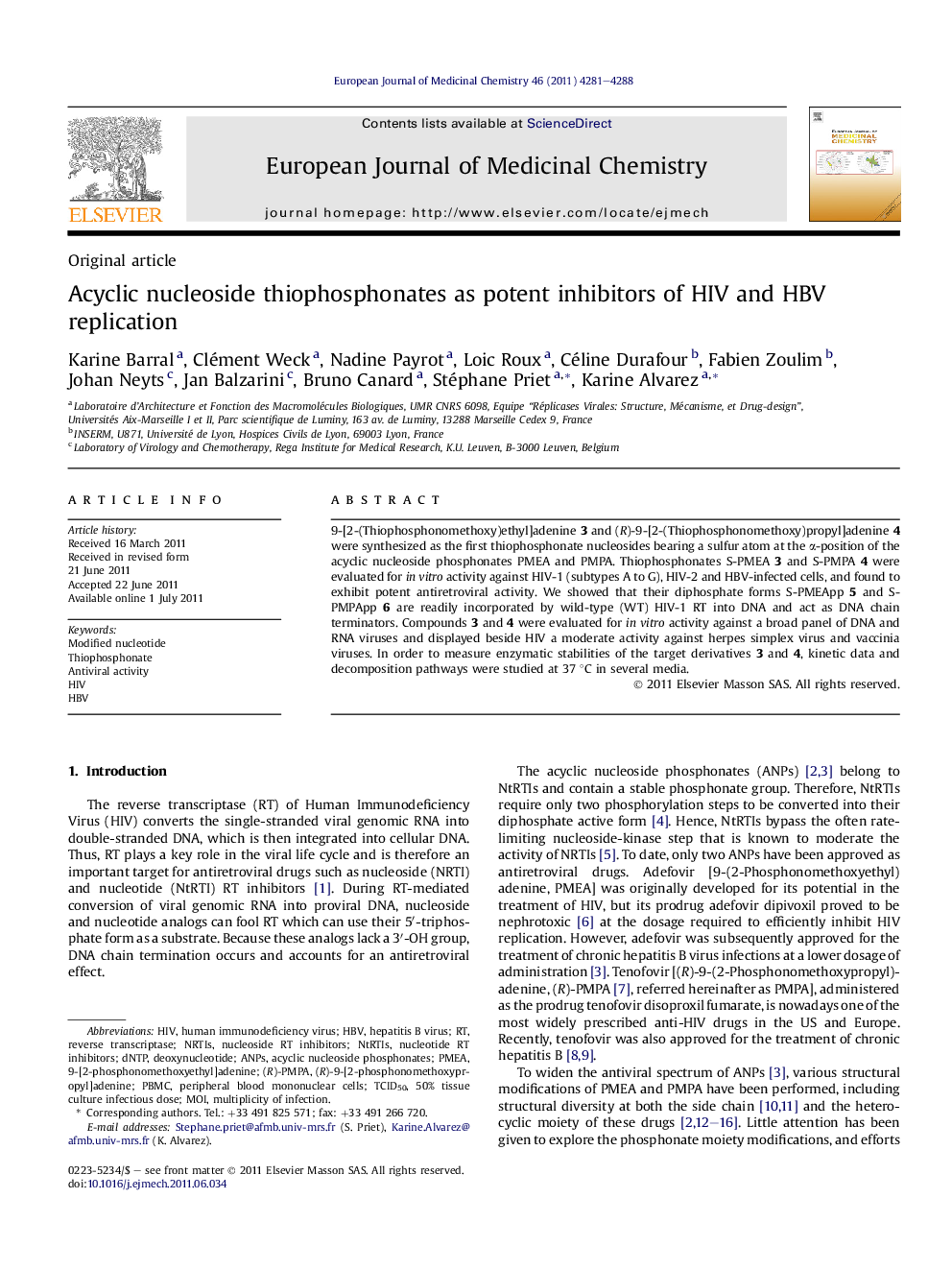| Article ID | Journal | Published Year | Pages | File Type |
|---|---|---|---|---|
| 1396193 | European Journal of Medicinal Chemistry | 2011 | 8 Pages |
9-[2-(Thiophosphonomethoxy)ethyl]adenine 3 and (R)-9-[2-(Thiophosphonomethoxy)propyl]adenine 4 were synthesized as the first thiophosphonate nucleosides bearing a sulfur atom at the α-position of the acyclic nucleoside phosphonates PMEA and PMPA. Thiophosphonates S-PMEA 3 and S-PMPA 4 were evaluated for in vitro activity against HIV-1 (subtypes A to G), HIV-2 and HBV-infected cells, and found to exhibit potent antiretroviral activity. We showed that their diphosphate forms S-PMEApp 5 and S-PMPApp 6 are readily incorporated by wild-type (WT) HIV-1 RT into DNA and act as DNA chain terminators. Compounds 3 and 4 were evaluated for in vitro activity against a broad panel of DNA and RNA viruses and displayed beside HIV a moderate activity against herpes simplex virus and vaccinia viruses. In order to measure enzymatic stabilities of the target derivatives 3 and 4, kinetic data and decomposition pathways were studied at 37 °C in several media.
Graphical abstractFigure optionsDownload full-size imageDownload as PowerPoint slideHighlights► The RT of HIV is an important target for antiretroviral drugs such as nucleosi(ti)de RT inhibitors. ► Two nucleotides (ANP) are currently used in HIV/HBV therapy: Adefovir (Hepsera) and Tenofovir (Viread). ► We have designed, synthesized and tested new ANPs: α-thiophosphonates named S-PMEA and S-PMPA. ► α-thiophosphonates display potent activity against HIV-1, clinical HIV-1 isolates, HIV-2 and HBV. ► S-PMEApp and S-PMPApp are potent inhibitors and readily incorporated by WT HIV-1 RT.
